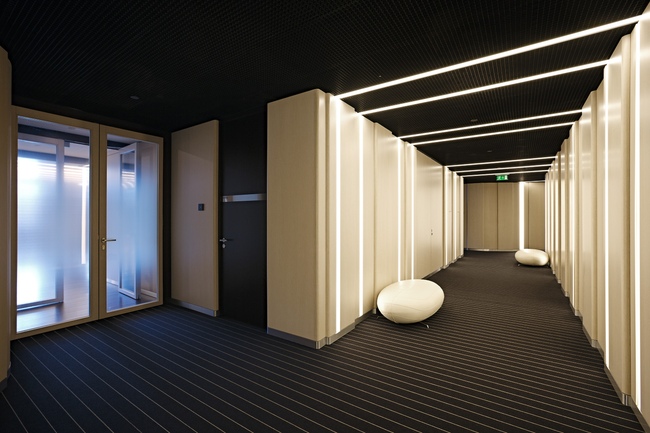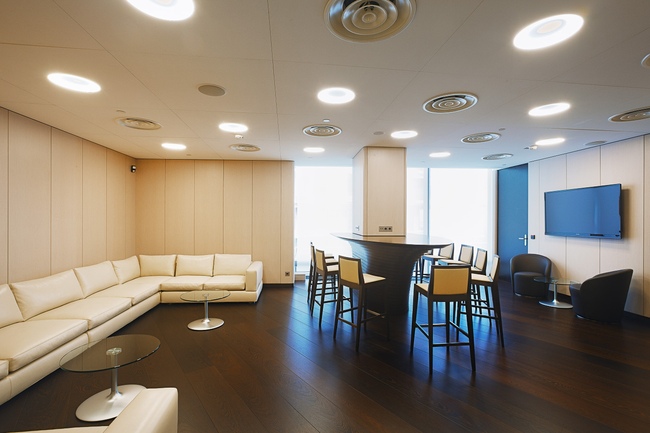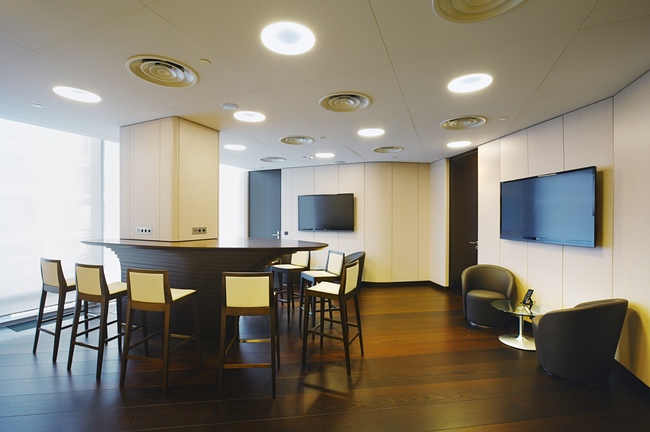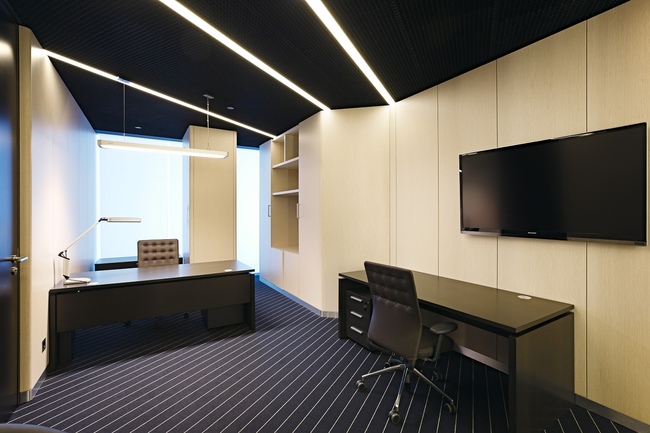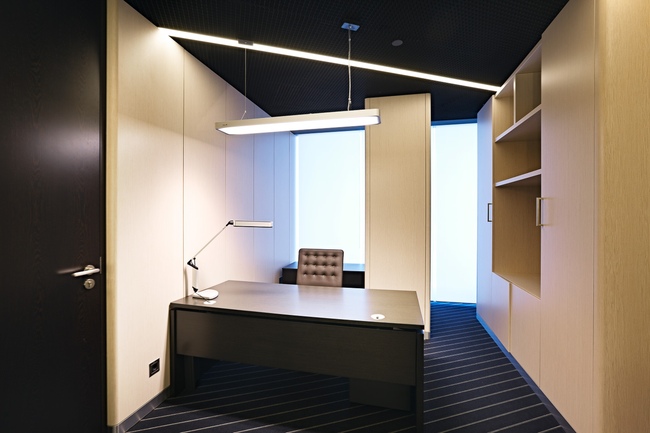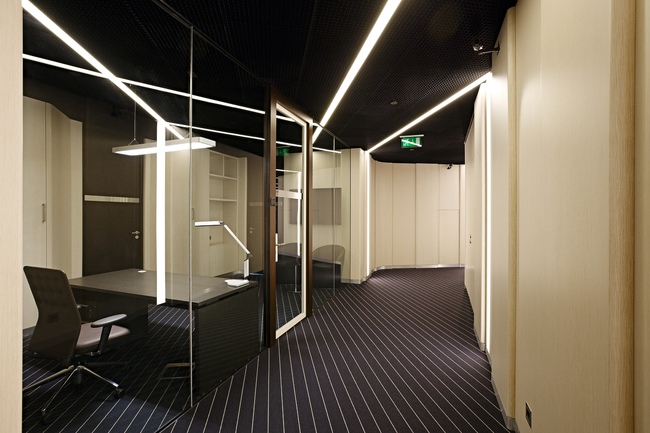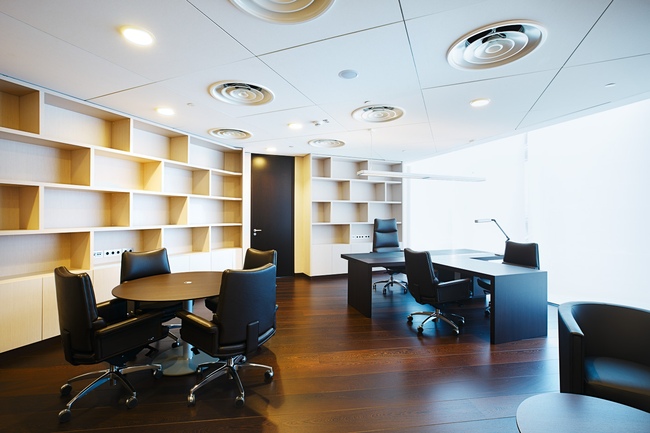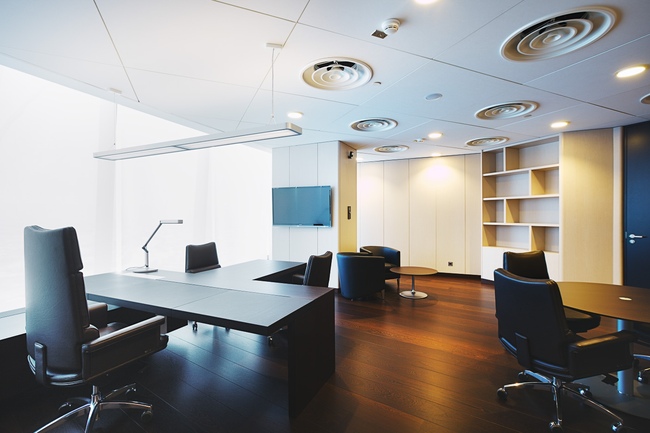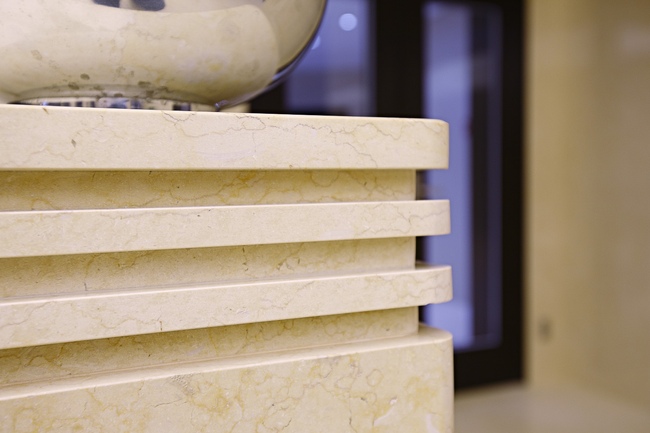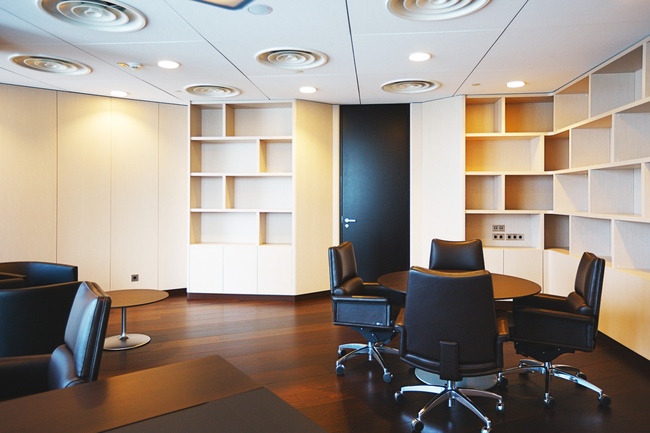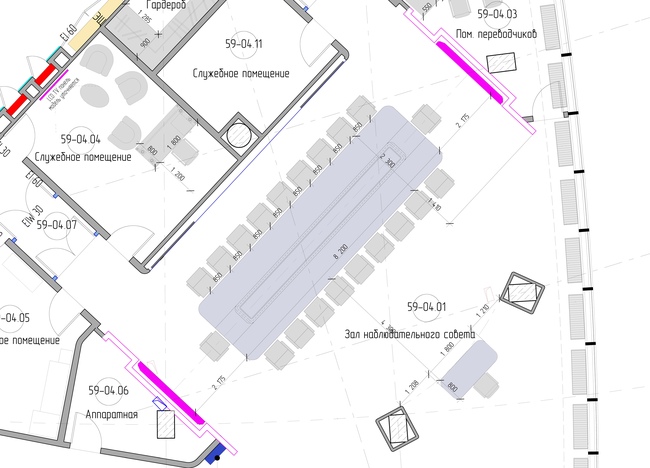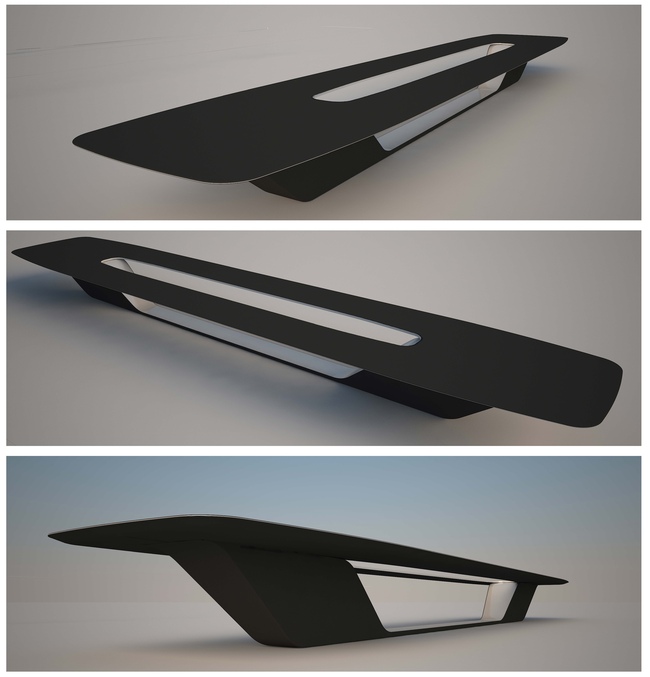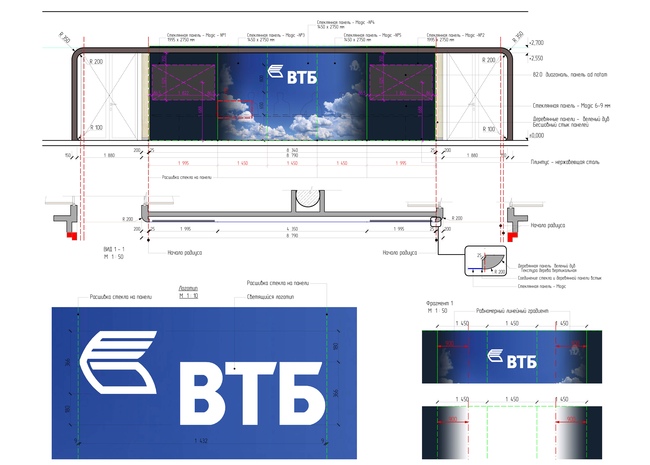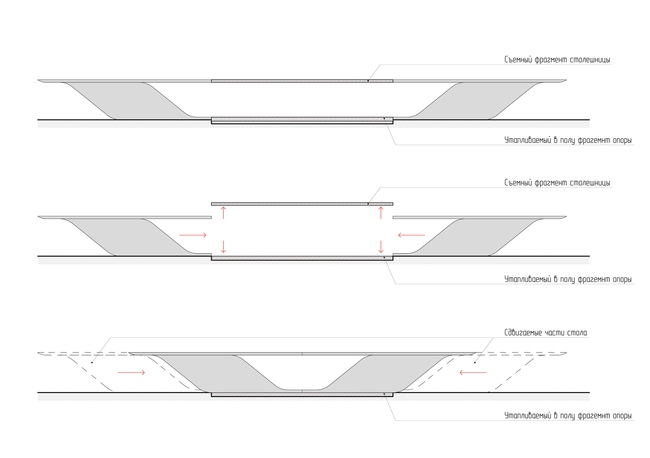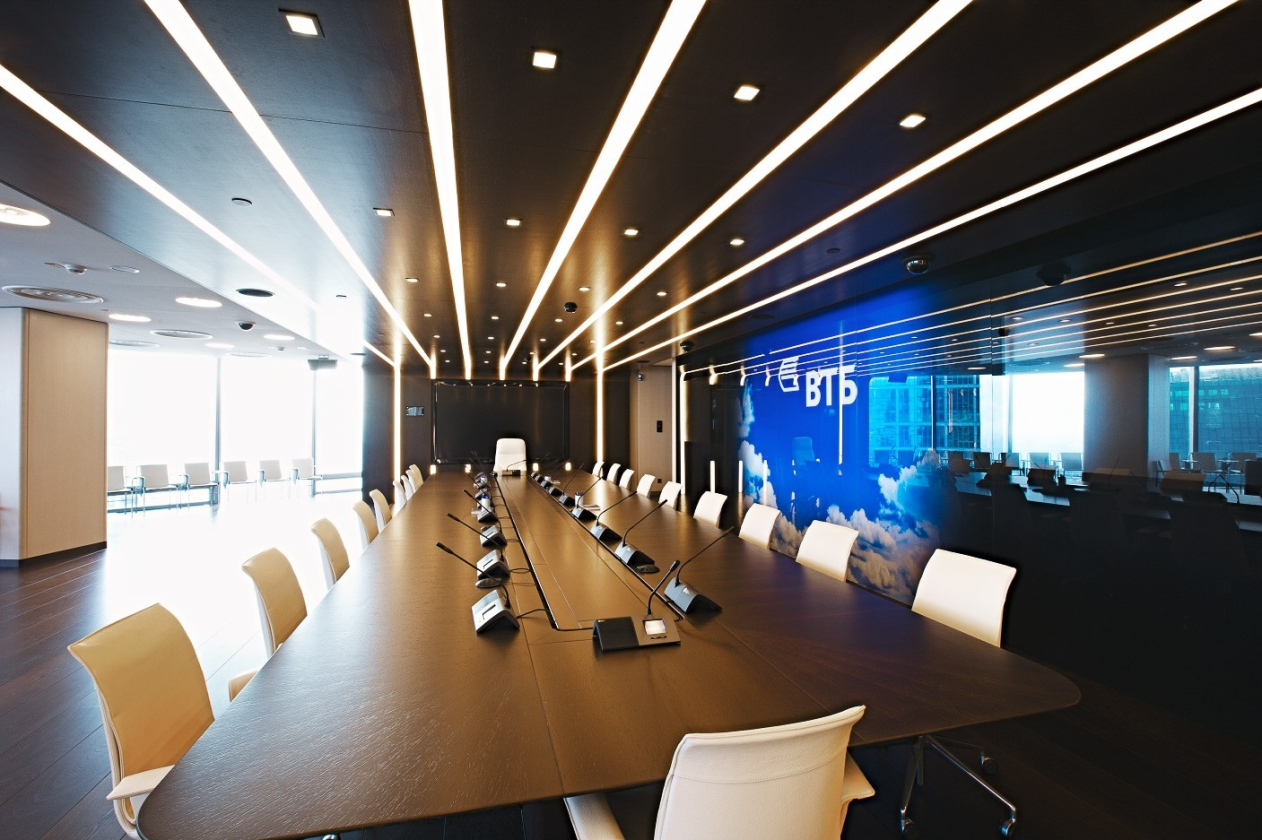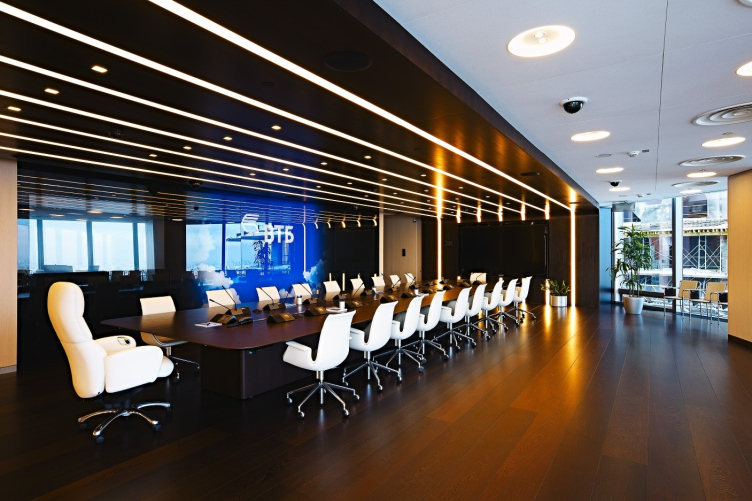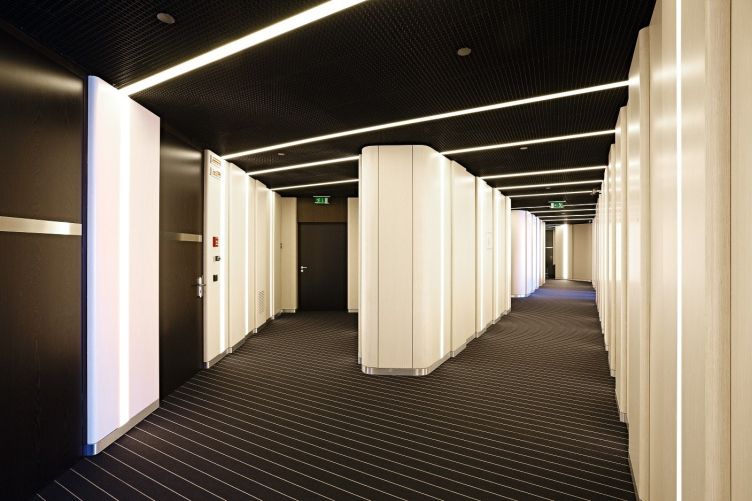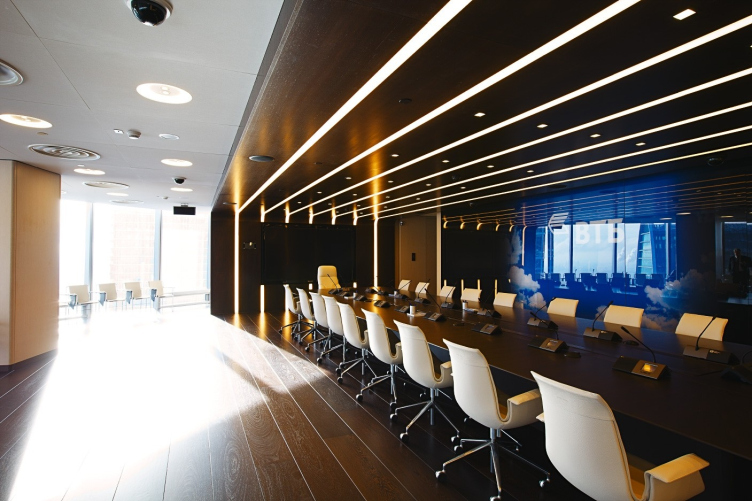The difference between the 59th floor and the other levels consists in
the fact that here, besides the six comfortable office blocks, there is also a
cluster of executive premises. The latter includes a few spacious halls and
occupies one of the corners of the tower. The main space is used for the multifunctional
hall of the board of directors that neighbors on a large dining hall and a
waiting room for the guests of the bank. For each of these zones, "SPEECH
Choban&Kuznetsov" bureau found a dedicated palette of interesting
solutions.
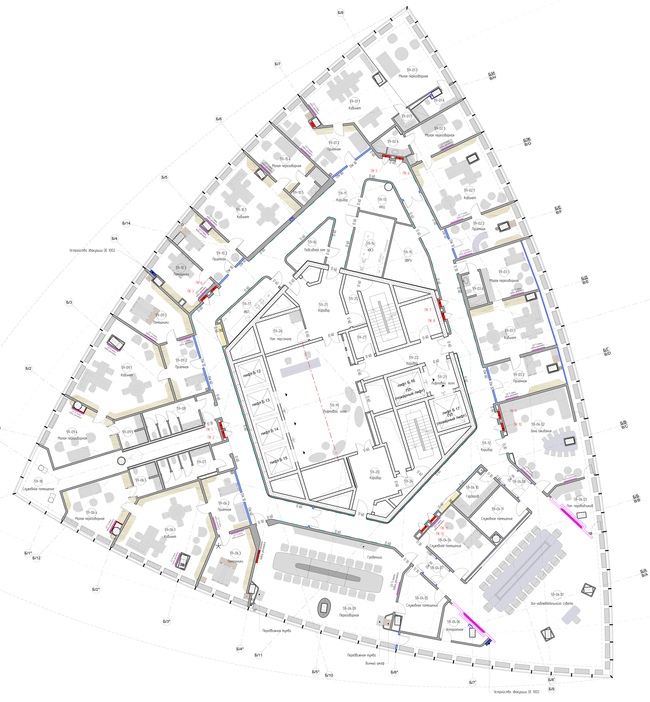
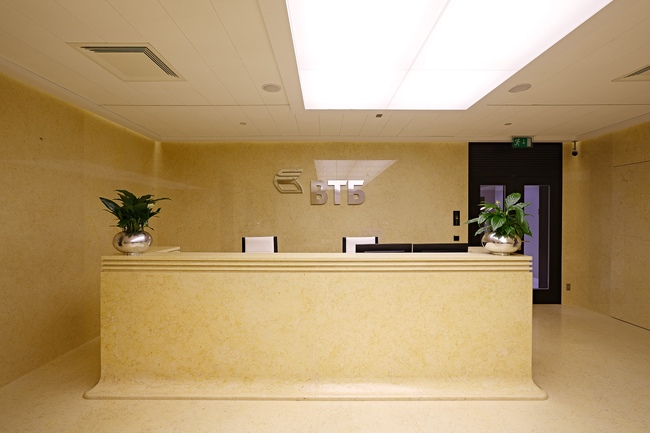
The hall of the board of directors can in fact be used in two modes: for
organizing panel sessions and for organizing conferences. In the former case
the large rectangular table, with a capacity of 22 persons and equipped with
all the necessary means of audio and video support, is used in the normal
operation mode, while in the latter case, when the larger part of the hall, the
one that adjoins the glass facade, is turned into an auditorium, it transforms.
Half of the tabletop folds vertically downward, while the table itself turns
into the presidium stand turned to the audience. In order to accent the table
area in either of the two using modes, the walls and the ceiling around it are
coated with wooden panels that form a peculiar shell or a capsule with rounded
corners, a shell that looks as if it was installed inside the hall. A special
effect is also created by the lights that dissect the wooden shell of the
capsule like parallel stripes. The finishing touch is made by the glass panel
painting that decorates the rear wall of the hall and depicts a deep blue sky,
white clouds, and the logo of VTB. It is in fact made up of four flare-free
glass panels that cover up the monitors that are only visible when they are on.
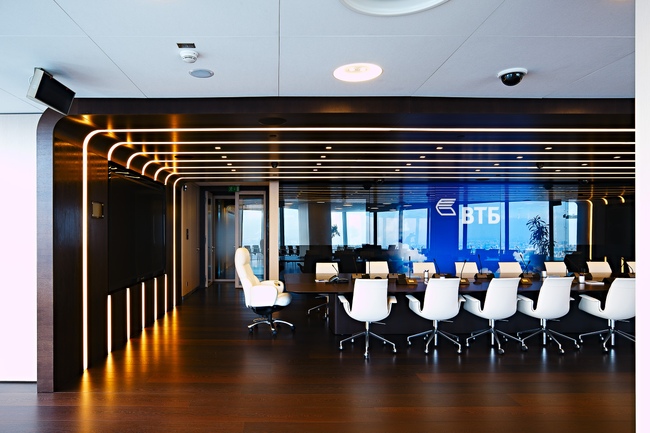

The room that is adjacent to the board of directors' hall can also be
used in several ways: as the before-the-session waiting room and as the dining
room for the members of the board, to name but two. Its main decoration
consists of two art objects vying for the right to be considered the
centerpiece of this interior: the sculptural volume that resembles an arrested
pillar of liquid metal (it disguises a most trivial column), and the impressive-looking
chandelier with a hundred of little glass balls that look like water drops that
are never to reach the tabletop. For the production of the metallic shell of
the column, a unique alloy of white bronze was used, the kind that only one
Italian company works with. The two halves of the shell were cast by the
original plaster model, and then welded and polished only on the spot. This art
object makes the interior of the dining room more dramatic and at the same
makes the atmosphere in the dining room more relaxed because it also works as a
funhouse mirror.
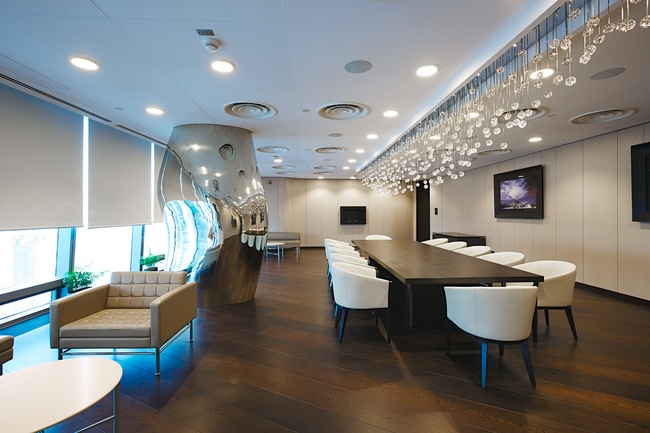
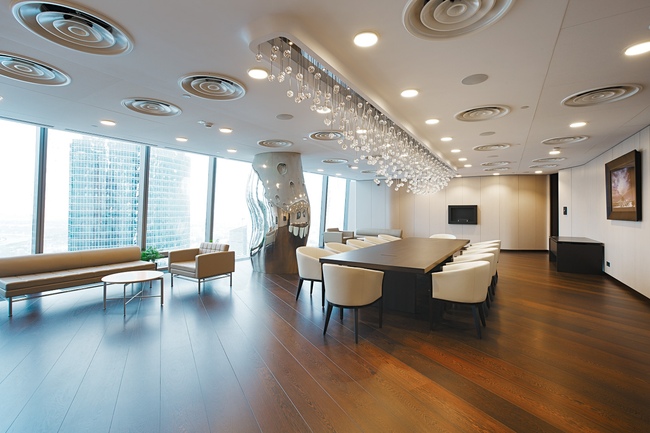
The chandelier in the shape of the glass rain was designed in conjunction
with the table and together they present a single composition for the creation
of which the architects even had to make changes to the structure of the
lowered ceiling. Out of the narrow opening with curved edges (the plaster
shapes are installed into the ceiling), there hang little glass balls,
suspended on thin metallic rods that form a "wave" that falls the
lowest towards the center of he table and "picks up" at its edges.
The function of the source of light is performed here by a fiber-optic
technology that provides the floodlight effect producing the impression of the
entire structure hovering in the air.
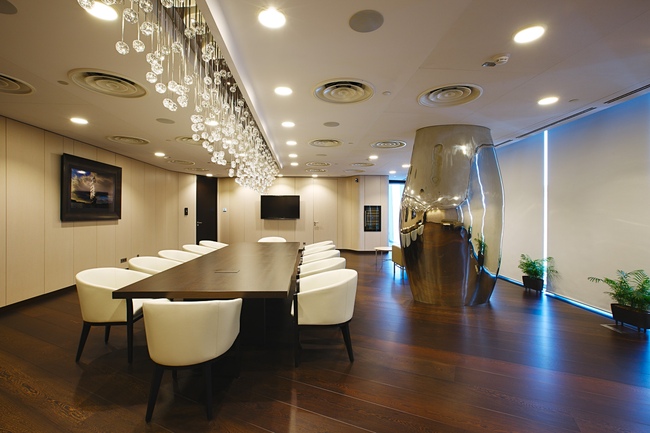
The remaining part of the floor, including the corridors and the
offices, is designed just as imposing, even if a bit more pragmatic. The
functional and the typological differences of the new floor left their mark on
its deigning solution. The basic principle - the contrastive combination of
wooden and glass walls - is kept here as well but it is treated here in an
entirely different way. Most of the walls here are coated with panels of
bleached oak (it is only the reception areas that are separated from the
corridors with glass partitions that have the dark wooden portals cut into
them), whose color and texture are accentuated by the dramatic light design and
more radical color design of the ceiling (black perforated open-grid type). In
spite of the fact that the materials are so respectable and traditional, in the
best sense of the word, the office looks a little like it had been taken out of
some sci-fi movie - first of all, because of the lights that are installed into
the walls and the ceiling. The position and the width of each of the dome
lights is defined by a grid of parallel lines superimposed on the plan of the
floor: it traverses at different angles the ceiling structures and the walls of
the corridors that skirt the central stair and elevator unit, thanks to which
the surfaces of the walls and the accent elements (the lines on the carpet, the
ceiling panels, and he dome lights) look as if the belong to different space
systems. This creates a peculiar optical effect of a "transformable
space" that is multiplied manifold at the expense of the reflections in
the glass partitions.
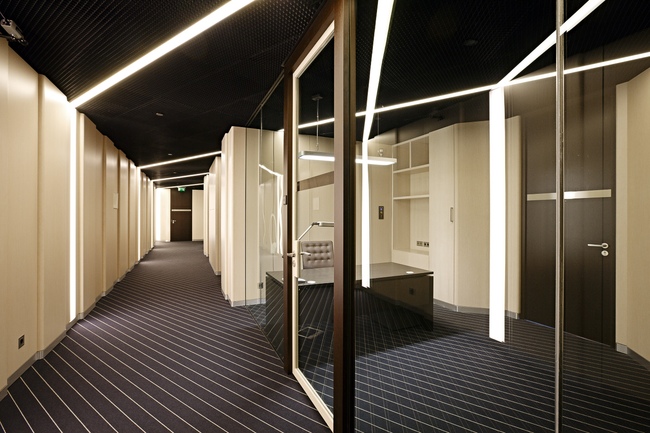
The lights inserted into the wooden panels became a constituent part of
the original wall covering. The considerable length of the corridors required a
solution that was to be simultaneously aesthetic, technological, and
inexpensive. So, instead of mounting the bleached oak panels horizontally (which
would require particular precision at the joints; this solution was in fact
used on the lower floors), it was decided to mount the panels vertically, from
the floor up to the level of the lowered ceiling. The architects developed a
special bracing that could easily hold the panels under their own weight: each
of the panels has rounded edges and is mounted overlapping its neighbor, which,
coupled with the illuminant inserts, creates an interesting play of light all
along the length of the corridor.
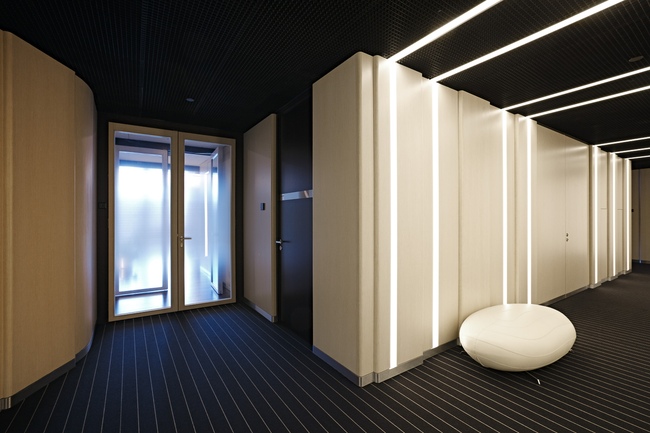
A most important role in the interior decoration is played by the
unconventional design of the ceilings. Here the architects used the open-grid
ceilings with cells that are filled with black cassettes. Usually such
"brutal" structures are used in public spaces of a lower profile but
in this case their use is not due to the economy reasons. The Hunter Douglas
panels that are installed here have small-scaled cells and extra perforation of
the laths - which creates a monolith structural surface. They, in turn, conceal
the vents (also painted black), the electrical wiring, and other technical
units necessary for supporting a comfortable microclimate in the office. Behind
the ceiling panels they are practically invisible, but the “permeable” surface
creates an interesting visual effect - the ceiling looks much higher that it
actually is.

